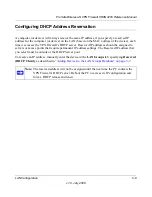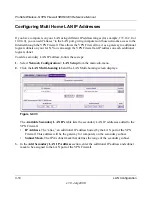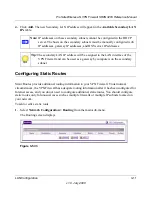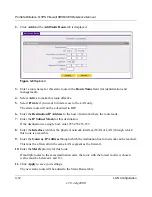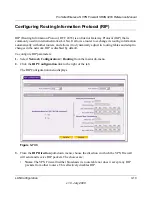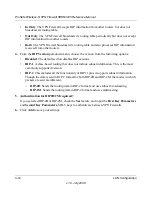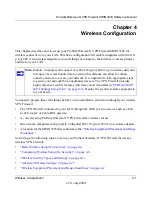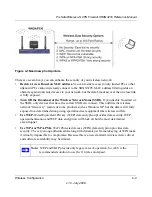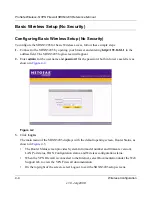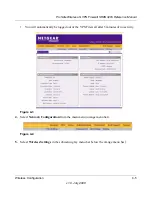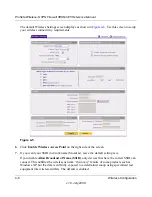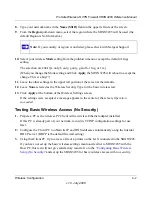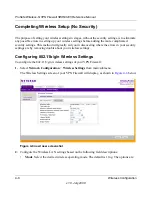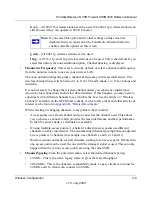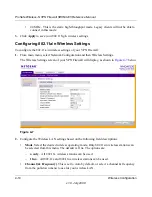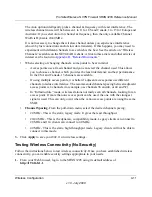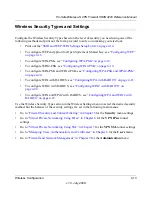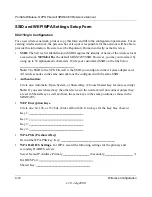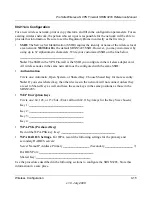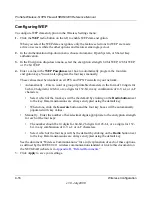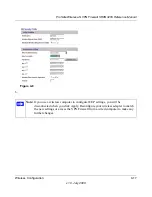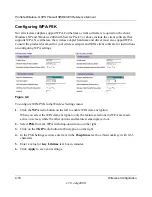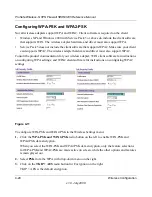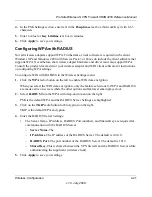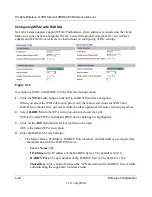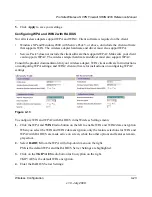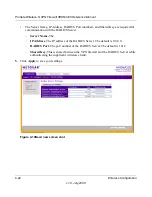
ProSafe Wireless-N VPN Firewall SRXN3205 Reference Manual
Wireless Configuration
4-9
v1.0, July 2008
–
b
only – All 802.11b wireless stations can be used. (The 802.11g wireless stations can
still be used if they can operate in 802.11b mode.)
–
g only
– All 802.11g wireless stations can be used.
–
11ng
– All 11b, 11g, and 11ng wireless stations can be used. This is the default.
If you
select this option, then one additional option, Channel Spacing, is displayed.
•
Channel (
&
Frequency)
. This is set to Auto by default, or select a channel and frequency
from the pull-down menu to use on your wireless LAN.
The Auto option intelligently picks a channel &
frequency
with least interference. The
wireless channel in use will be between 1 to 11 for US and Canada, 1 to 13 for Europe and
Australia.
It is not necessary to change the wireless channel unless you experience interference
(shown by lost connections and/or slow data transfers). If this happens, you may need to
experiment with different channels to see which is the best. See the article on “Wireless
Channels” available on the NETGEAR website. A link to this article and other articles of
interest can be found in
Appendix B, “Related Documents
.”
When selecting or changing channels, some points to bear in mind:
–
Access points use a fixed channel and you can select the channel used. This allows
you to choose a channel, which provides the least interference and best performance.
In the USA and Canada, 11 channels are available
–
If using multiple access points, it is better if adjacent access points use different
channels to reduce interference. The recommended channel spacing between adjacent
access points is 5 channels (for example, use channels 1 and 6, or 6 and 11).
–
Wireless stations normally scan all channels, looking for an access point. If more than
one access point can be used, the one with the strongest signal is used. This can only
happen when the various access points are using the same SSID.
•
Channel Spacing.
From the pull-down menu, select the desired channel spacing.
•
20 MHz - This is the static, legacy mode. It gives the least throughput.
•
20/40 MHz - This is the dynamic, compatibility mode. Legacy clients can connect to
20 MHz and 11n clients can connect to 40 MHz.
Note:
If you select this option and if other settings on this screen are
disabled, then you must select the Turn Radio On radio button to
enable available options on this screen.

